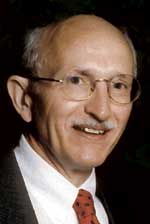Packaging Technology: Defining the State of the Art in Cultured Products Packaging


DF: Most cultured dairy is packaged in rigid plastic containers. How has the typical yogurt or sour cream package changed in the past 20 years?
BB: Obviously, packaging has gotten lighter. The weight of the typical 8 oz. injection-molded polypropylene container has been reduced from approximately14g to 7.5g - a 40 to 50 percent reduction over the past 20 years.
In addition, we’ve seen the widespread adoption of containers utilizing a membrane, made out of foil or Mylar. This, of course, has been in response to consumer demand for greater tamper evidence.
And, very importantly, we’ve seen an evolution from rudimentary, two-color line art as package decoration to very sophisticated, eight-color process printing. Today’s grocery aisles and dairy cases are crowded and competitive places. It is the packaging that provides a product or brand’s unmistakable face to the consumer.

BB: Indeed, there has been an evolution in material technology. We’ve progressed from high-impact polystyrene (HIPS) to polypropylene. Resins have developed from 25 to 100 melt flow, enabling injection molders to reduce the weight of the packaging by 40 to 50 percent.
DF: Cultured product forms have changed in recent years, with more drinkable and even squeezable yogurts and sour cream and new forms of cottage cheese being offered. How have packaging suppliers responded to, or been a catalyst for, these changes in forms?
BB: The packaging technology has been around for years; it is now simply being adapted to fit the needs of dairy processors, their products and brands. For example, blow-molded bottles with shrink sleeves that are now being used for drinkable yogurts, dual-compartment containers that are being used for fruit and cottage cheese, form-fill and seal multi-packs, flexible packaging and pouches. None of these technologies are really new; what is new and innovative is continuously applying these technologies to enable new breakthrough product categories to emerge and develop.

BB: In Europe today you see a lot of in-mold labeling, particularly with margarine and cheese products, that has yet to make its way to cultured products here in the U.S. You also see a trend towards thermoforming, and towards smaller single-serve containers - for example, Dannon’s new 6-ounce yogurt. And you see continued improvement in package design and graphics, a never-ending trend towards more colorful packaging.
DF: Retailers and processors seem to be asking for a number of things in packaging - less material, more security, lower costs, better graphic applications, special materials, just to name a few. What are your customers asking for?
BB: Our customers are looking for faster time-to-market with new products. They are looking for just-in-time, made-to-order solutions, in order to reduce their own inventories of containers and packaging. In addition, they’re looking for a quick-change, “pit stop” mentality on the part of their suppliers, so that we can be as responsive and as much a partner as possible in the new product development process.
Our customers are looking for innovative ideas at a minimum premium cost. They are looking for improved graphics, more colors, and greater food security through the adoption of tamper-evident packages.
DF: Finally, Bob, what innovations are around the bend for cultured packaging, whether from the U.S. or abroad?
BB: We’re going to see better labeling, more sleeving and in-mold labeling, more use of pigments in the basic container resins.
We’re also going to see an increase in strategic partnering between packaging suppliers and their customers, and more total supply chain linkage between buyers and suppliers. By that I mean it is no longer sufficient to consider just the price of the container; the logistics, total system costs and time-to-market are taking on ever-increasing importance. These are some of the areas for non-product innovations and improvements that will affect us all in the future.

Sidebar: Cultured Product Packaging suppliers
H.S. Crocker Co. has developed several new non-foil lidding structures to seal your yogurt containers. For years, customers have asked for a pre die-cut lid other than foil. Metal Detection, Microwaveable, Tear and Puncture Resistance are just a few of the advantages associated with these new materials.H.S. Crocker provides packaging solutions that meet customer requirements for portion pack, pressure sensitive, foil, film, paper, plastic, metalized paper, IML and specialty products.
H.S. Crocker
847/669-3600
www.hscrocker.com
Airlite Plastics is a leader in the plastic food packaging industry and offers a line of dairy packaging. Yogurt containers ranging from 4 oz to quart and half-gal. Retail cultured containers in sizes ranging from 8 oz to 32 oz., and foodservice sizes from 2 to 10 lbs. Linear low density Polyethylene lids are also available in a variety of sizes and colors.
Airlite Plastics
800/228-9545
www.airliteplastics.com
Berry Plastics Corp. supplies rigid wall plastic containers the dairy industry in sizes ranging from 4 oz cups to 36 lb pails.
Berry Plastics Corp.
812/424-2904
www.berryplastics.com
Polytainers Inc. is a leading manufacturer of rigid plastic packaging systems for cultured products. Polytainers develops plastic packaging with a wide array of design options and container specifications. Designers use 3-dimensional rendering software (Solidworks ) for package design at the concept stage.
Polytainers Inc.
416/239-7311
www.polytainersinc.com
Winpak Portion Packaging Inc. specializes in manufacturing sophisticated multi-layered blown film structures. The materials used include various combinations of Ethylene Vinyl Alcohol (EVOH), nylon, Surlyn, and polyethylene (low and high density). The company produces coextruded films on a variety of production lines ranging from three layer / three component to seven layer / seven component extrusion equipment.
Winpak Portion Packaging Inc.
267/685-8200
www.winpak.com
American Fuji Seal, Inc. provides a variety of label and sleeve solutions including shrink sleeve labels, tamper evident seals, and in mold plastic labels.
American Fuji Seal, Inc.
800/533-3854
www.afseal.com
Looking for a reprint of this article?
From high-res PDFs to custom plaques, order your copy today!




